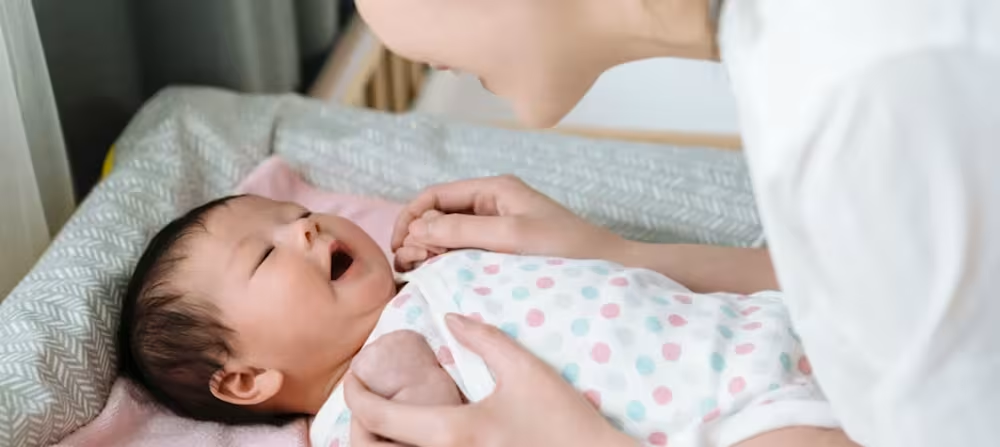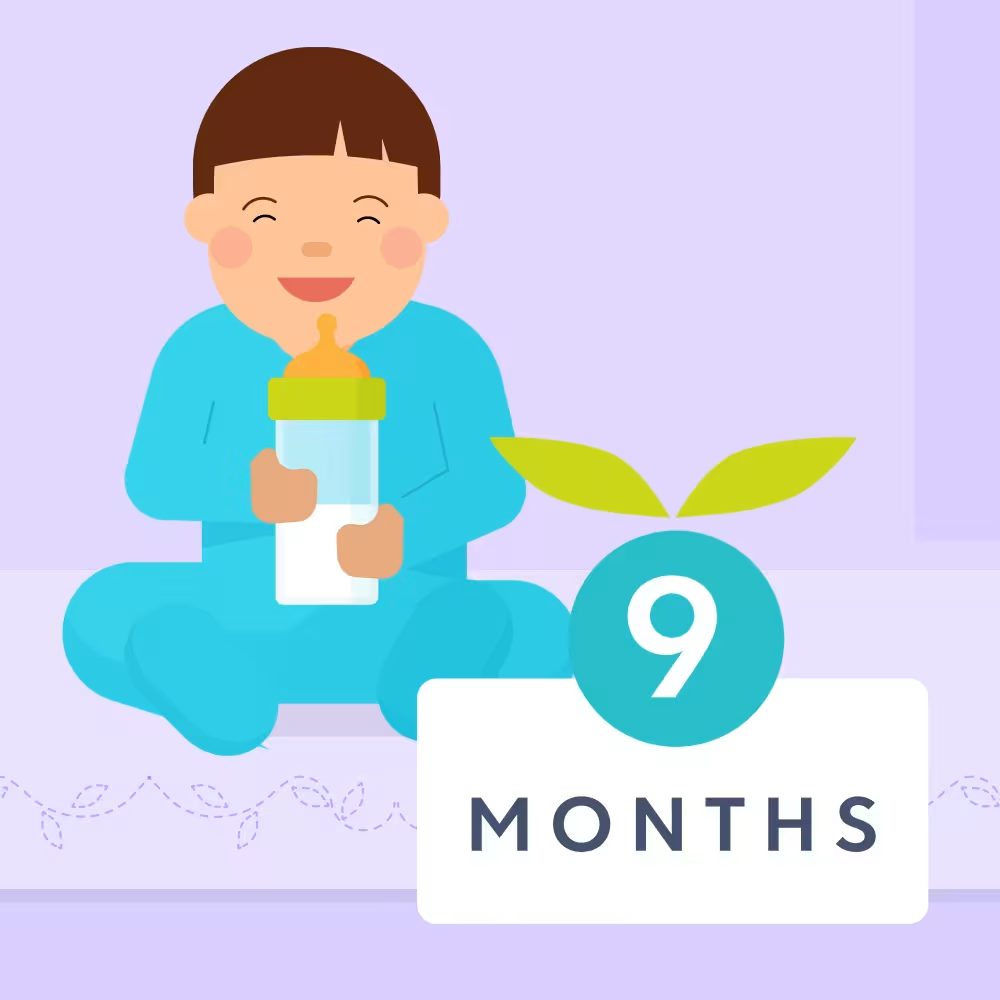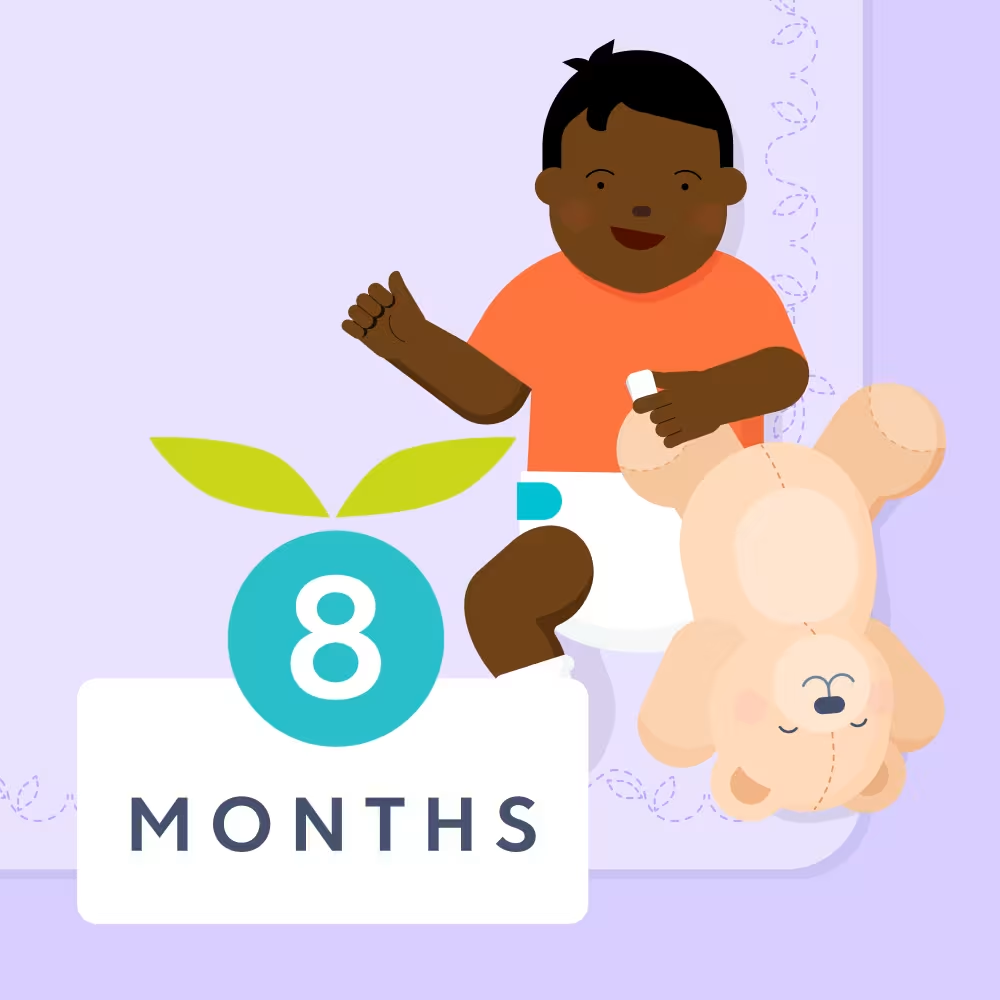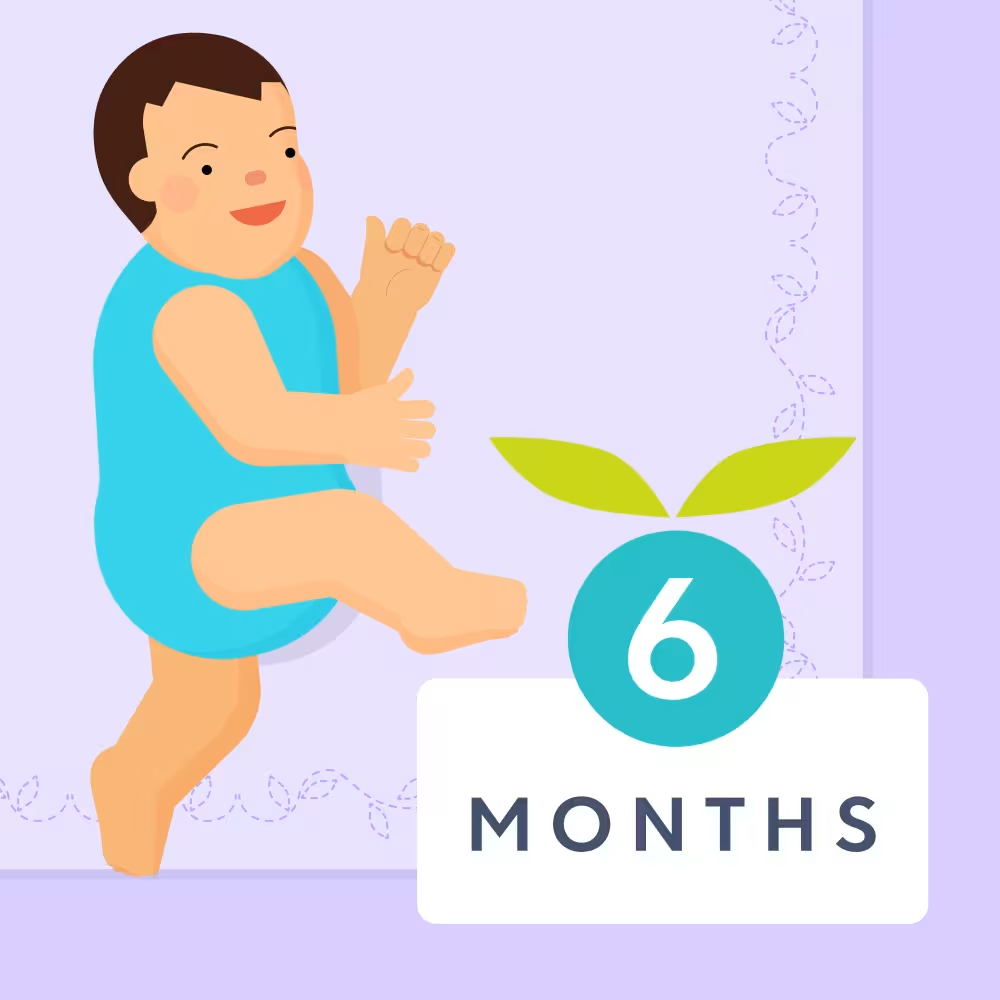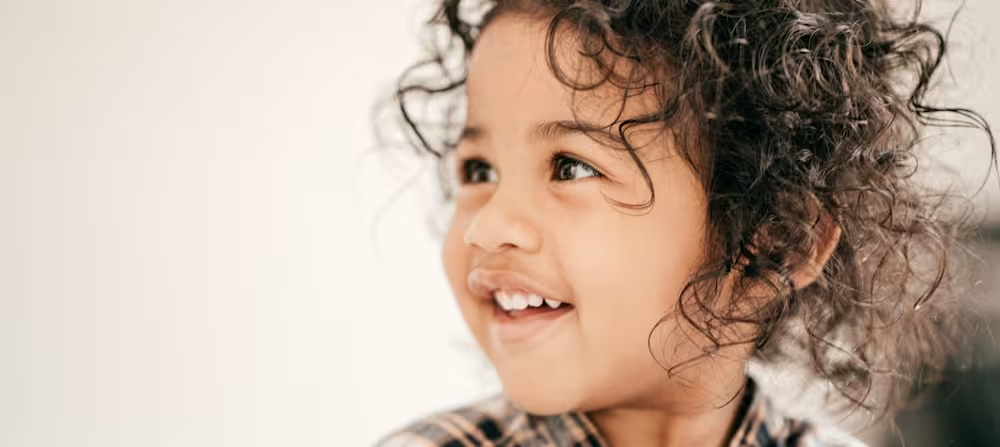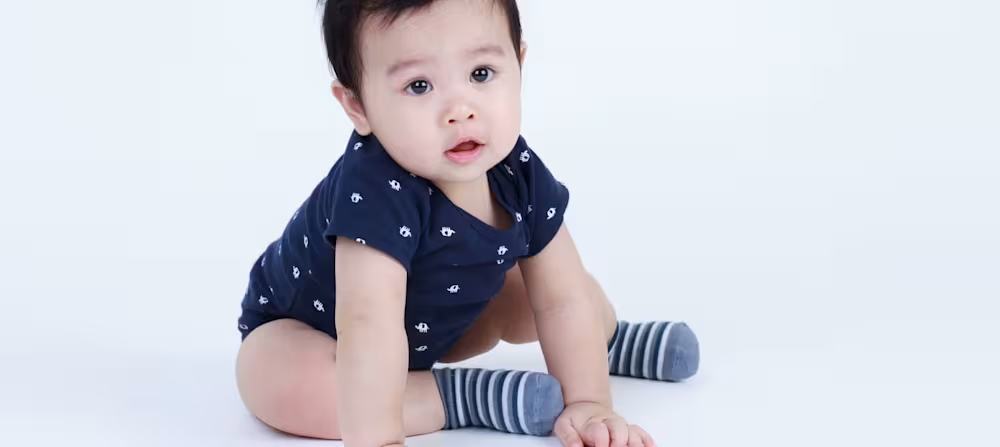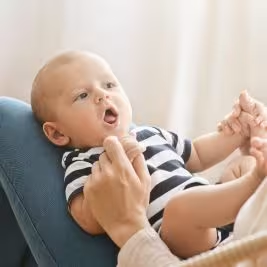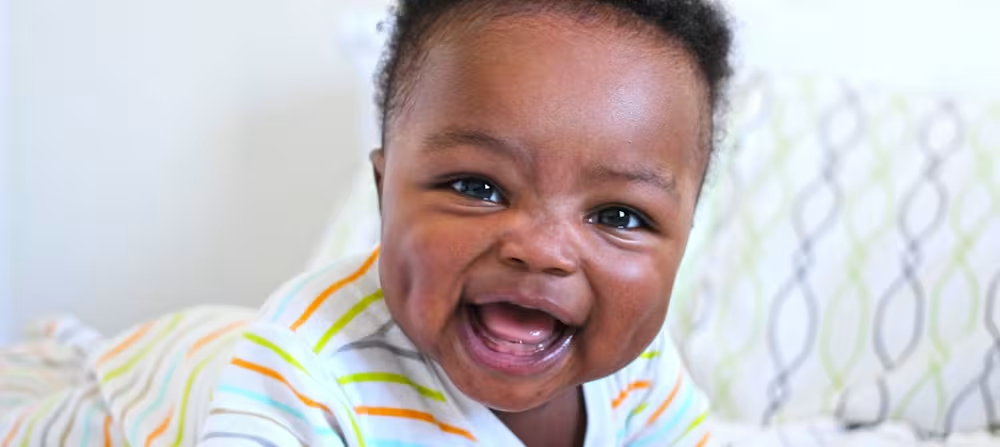When do babies clap, wave, and point for the first time?
Updated Oct 17, 2025

It’s very exciting when your baby begins to communicate with you in ways beyond cries and coos. Before they can express themselves with words, your little one will likely start using gestures like clapping, waving, and pointing. These nonverbal milestones are both adorable and important for connection and future speech and language development.
In this article, we’ll take you through when you may expect your child to clap, wave, and point. We’ll also provide tips to encourage your little one to use these gestures and give you an idea of how communication develops from there.
Editor's note
When we discuss babies and development at Huckleberry, we use their adjusted age (vs. actual age). It’s expected that infants will reach physical milestones at different times — there’s a wide range of normal when it comes to how fast little ones grow and develop. However, you know your baby best. If you have any concerns or questions about your child’s development, reach out to their pediatrician.
Table of Contents
When do babies clap, wave, and point?
When do babies clap?
By around 9 months old [], babies are often able to bang two things together — and clap their hands too. Then, around 15 months [], little ones typically use clapping to show emotion, like excitement.
When do babies wave?
Little ones may start to wave at the tail end of the 6 - 9 month age range. They may wiggle their hand [] to wave closer to 11 months and then meaningfully wave "bye-bye" around their first birthday [].
When do babies point?
Pointing usually begins at around 9 months []. After a baby’s first birthday, they may begin pointing to show you things, indicate something they want, or get your attention. At this age, children typically reach with an open hand [], with their fingers spread. Around 14 months [], children may be able to point with an index finger to call attention to something farther away too.
Why do babies clap, wave, and point?
Communication development
Receptive language (understanding words and using gestures) comes before expressive language (talking). Gestures like clapping, waving, and pointing are all forms of non-verbal communication that help your little one learn to express themselves, even if the action comes before the intention. For example, a baby typically possesses the fine motor skills to clap a few months before they begin clapping to show excitement. However, it’s adorable from the beginning!
A child’s use of gestures is also a good way to gauge their communication development [] before they’re able to talk. Typically children who use more gestures early on have larger expressive vocabularies [] later.
Social development:
Skills like clapping, waving, and pointing all help your little one develop social skills before they can talk. This form of social communication helps your child connect with you [] and other loved ones, helps them learn language, and teaches them how to interact with others too.
Ways to encourage baby to clap, wave, and point?
Tip #1: Model gestures for your baby
A great way to encourage your little one to clap, wave, and point is by modeling these gestures for your child. Be sure to say the word and use the gesture at the same time [] to help reinforce the meaning of the word. Try saying something like, “Wave bye to grandma!” as you wave your hand or “Point to the garbage truck” as you point to one coming down the street.
Tip #2: Respond to your baby’s gestures
Once your little one starts using these gestures, it can be helpful to acknowledge them when they do (as much as possible). This can look like copying the gesture they made and you saying the word too. Children learn through repetition and can benefit from repeated exposure to the word and action.
Tip #3: Talk, read, and sing to your little one
Exposure to language in all forms is very important for your child’s early communication development. When you talk or read books, try pointing out and naming objects to help your baby learn to point and begin to learn new words. Singing exposes children to different sounds and tones and you can incorporate gestures into songs too.
Tip #4: Play games like pat-a-cake
Social games like peekaboo and pat-a-cake are good ways to teach your little one gestures. Pat-a-cake already incorporates clapping and pointing, and you could even include a wave at the end. When you play peekaboo, try waving after the “peek!” or point to your baby when you say, “I see you!”
Baby not clapping, waving, or pointing: What to do
It’s expected that babies will reach milestones at different times. There’s a wide range of normal when it comes to infant communication skills so your little one may begin clapping, waving, and pointing before or after the listed age ranges. Usually, this is not cause for concern. However, the AAP recommends [] letting your child’s pediatrician know if they are not using gestures or pointing to objects or pictures at all by their first birthday. If your toddler isn’t pointing to objects [] or pictures when asked “Where’s the… ?” by 15 months, let their doctor know as well.
Clapping, waving, and pointing unlocked: What's the next step?
Babies’ communication skills continue to grow and develop after they’ve learned how to clap, wave, and point. Even these gestures become more complex as children grow — they’ll use pointing to direct attention to an object or event, for instance. Here are speech and language milestones you may expect from 1 - 2 year olds:
Around 12 months:
Understands the names of things they see or use often (“ball,” “dog” etc.)
Says at least 1 word []
Babbles with intonation
Responds to their name most of the time
Around 15 months:
Follows directions [] given with both a gesture and words (“Give me the toy” and hold your hand out)
Points to ask for something or request assistance
Looks at a familiar object when you name it
Around 18 months:
Tries to say 3+ words [] (besides “mama” or “dada”)
Follows simple instructions without corresponding gestures
Around 24 months:
Points to many body parts, common objects, and some pictures in books
Says about 50 to 100 words []
Says 2-word sentences and phrases (“All gone,” “mama go,” etc.)
Takeaway
Clapping, waving, and pointing are gestures your baby will likely learn somewhere around 9 - 12 months. Oftentimes the action precedes the intention, meaning that a baby has the motor skills to bring their hands together to clap first, and then a few months later they use clapping as a way to express joy and excitement.
A child’s use of gestures can be a good indicator of their future communication development. Usually, babies who use more gestures have larger vocabularies later.
You can encourage your infant to use gestures like clapping, waving, and pointing by modeling them. Try saying the word and using the gesture at the same time to help your little one learn. Also, respond to your child when they use gestures to show you’re interested and boost their confidence. These early “conversations” help build the foundation for future speech and language development.
There’s a wide range of normal when it comes to speech and language development so your little one may reach these milestones before or after 9 - 12 months. However, if your child isn’t using gestures at all or you notice any other communication red flags at 12 months, check in with your baby’s pediatrician.
Baby clapping, waving, and pointing: FAQs
Share article:
Note: The content on this site is for informational purposes only and should not replace medical advice from your doctor, pediatrician, or medical professional. If you have questions or concerns, you should contact a medical professional.
10 Sources
Table of Contents
Share article:
